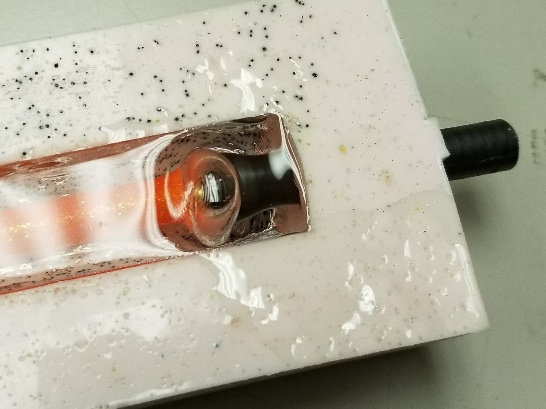larryc
Member
Who uses Liquid Diamonds epoxy resin?
Results? Comments?
I find only one reference to it here in the forum.
Results? Comments?
I find only one reference to it here in the forum.
I ordered some and received it today. I'm looking forward to trying it out. I like hearing that it is odorless. I hope it works as well as I've heard it does.
What are you guys using color it.
How much work time do you have before you need to pour with Liquid Diamonds?
Do colors stay separated with Liquid Diamonds? Or, is LD still very thin when pouring into a mold?
Epoxy resins are notorious for yellowing. Any info on LD and yellowing from sources other than the manufacturer?
Do a good turn daily!
Don
can you color the resin (i.e. blue, white etc.)? If so what would you use to dye the resin? Thanks William
Does LD get as hard as acrylic? Hard enough that you can not dent it with a fingernail?
Thanks! I just need to wait longer then. I completed my first two sets of castings over the last two days. Just 24 hrs since the last one.
I'm curious what everyone's average pressure pot time and de-mold times are? (I know it highly variable)
Ive been using 7 hrs under pressure and 8-9 for de-mold with good results. It's still soft but past the point of deforming.
I'm using lecithin release. I don't like using silicone on anything that will get a finish.
I'm curious what everyone's average pressure pot time and de-mold times are?

Has anyone used the weatherproof labels when doing tube-in casting with liquid diamonds?
I prefer the weatherproof labels over typical mailing labels for the deeper colors I get with the weatherproof labels. They work great with alumilite, but I don't know if they work with PR and others.
Has anyone used the weatherproof labels when doing tube-in casting with liquid diamonds?
I prefer the weatherproof labels over typical mailing labels for the deeper colors I get with the weatherproof labels. They work great with alumilite, but I don't know if they work with PR and others.
Has anyone used the weatherproof labels when doing tube-in casting with liquid diamonds?
I prefer the weatherproof labels over typical mailing labels for the deeper colors I get with the weatherproof labels. They work great with alumilite, but I don't know if they work with PR and others.
I am using liquid diamond with weatherproof label some and they work very good. I have them in the pot 12hrs, there still soft when I take them out but not to soft to demold.
I couldn't get weatherproof labels to work with pr and I even sealed the labels.
I couldn't get weatherproof labels to work with pr and I even sealed the labels.
I couldn't get weatherproof labels to work with pr and I even sealed the labels.
What wasn't working? I'm asking because I used Avery Trueblock labels, and had horrible results after sealing the label with CA. It looked like the CA flaked/crackled.
I didn't have that problem when I used "regular" labels. I haven't done much label casting, so I don't know if I messed up in process, or if it's something about the Trueblock.
Thanks in advance.
